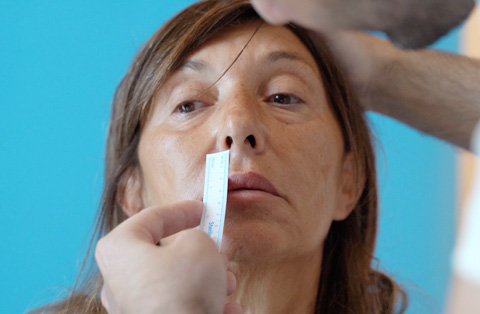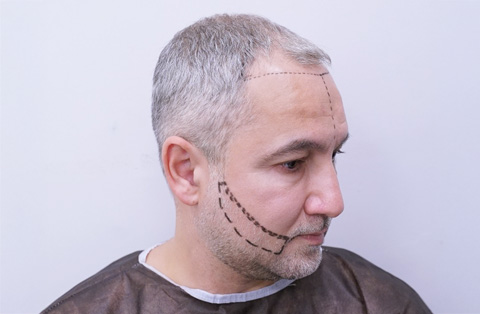Struggling with blurry vision or eye spots? Learn how dry eyes and floaters connect, what causes them, and the best ways to protect and restore lasting eye comfort and clarity.
Dry eye is a common condition where the eyes don’t produce enough quality tears, causing irritation, burning, and blurred vision. Floaters, on the other hand, are small shapes that drift across your sight, often due to changes in the eye’s vitreous gel.
Understanding how these two issues relate is important because both become more frequent with age and digital screen use. Studies show that nearly one in three adults experience dry eye symptoms, while most people notice floaters by midlife. Recognizing their differences helps prevent confusion and unnecessary worry.
In this article, we’ll explain what dry eye syndrome and floaters are, why they appear, how they interact, and what treatments or management options can protect your long-term eye health.
What is Dry Eye Syndrome?
Dry Eye Syndrome is a condition where the eyes don’t produce enough tears, or the tears evaporate too quickly. This imbalance leads to dryness, irritation, and inflammation of the eye’s surface.
Tears are essential for maintaining a healthy cornea and clear vision. They contain water for moisture, oils to reduce evaporation, mucus for even distribution, and antibodies to prevent infection. When any of these components are lacking, the eye surface becomes unstable and sensitive.
Common symptoms include burning, stinging, redness, blurry vision, and a gritty sensation, often described as feeling like sand in the eye. Some people also experience excessive tearing, a paradoxical response to irritation.
Dry Eye Syndrome typically develops due to aging, long screen exposure, contact lens wear, certain medications, or environmental factors such as wind and low humidity. Hormonal changes, autoimmune diseases, and ocular surgery can also increase risk.
While often mild, chronic dryness can damage the cornea and affect visual quality. Identifying the underlying cause early helps protect long-term eye health and comfort.
What are the Complications From Dry Eye?
Chronic dry eye can cause more than discomfort, it can harm the eye’s surface and affect vision over time. When tears fail to lubricate and protect the cornea, several complications may develop.
Persistent dryness can lead to corneal damage, such as tiny abrasions, ulcers, or in severe cases, scarring. These injuries can distort vision and increase sensitivity to light. Unstable or inflamed tear film also makes the eye more vulnerable to infections, since tears normally wash away bacteria and debris.
Some patients experience chronic inflammation of the conjunctiva and eyelids, which can worsen redness, swelling, and discomfort. Over time, untreated dryness can create a cycle where irritation triggers more inflammation, further reducing tear quality.
Visual clarity often declines, especially during reading, driving, or computer use. The lack of moisture disrupts light refraction on the corneal surface, causing intermittent blurred or fluctuating vision.
Severe dry eye can significantly affect quality of life making daily tasks uncomfortable and increasing the risk of long-term ocular complications. Early diagnosis and management are key to preventing permanent damage and maintaining clear, healthy vision.
What are Floaters?
Floaters are small, shadow-like shapes that drift across your field of vision. They often look like dark spots, squiggly lines, or cobweb strands that move as your eyes move.
These shapes form inside the vitreous, the gel-like substance that fills most of the eye. As we age, the vitreous becomes thinner and starts to shrink. Small clumps of collagen or cellular debris may form and cast shadows on the retina, the light-sensitive layer at the back of the eye. Those shadows appear as floaters.
Floaters are common and usually harmless, especially when they develop gradually. However, a sudden increase in number, flashes of light, or loss of peripheral vision can signal a retinal tear or detachment, a medical emergency that requires immediate care.
Aside from aging, floaters can appear after eye injury, inflammation, bleeding, or surgery. Conditions such as diabetes or high myopia may also increase risk.
While floaters don’t affect vision clarity directly, they can be distracting, particularly against bright backgrounds like the sky or computer screens. Understanding what causes floaters helps distinguish normal age-related changes from warning signs that need professional evaluation.
Why Do Floaters Appear?
Floaters appear when changes occur within the vitreous humor, the transparent gel that fills the space between the lens and the retina. This gel helps maintain the eye’s round shape and optical stability.
As part of the natural aging process, the vitreous gradually becomes more liquid, a process called vitreous syneresis. During this change, tiny fibers of collagen clump together and cast shadows on the retina, creating the floating spots, threads, or cobweb-like shapes you see.
Another key reason floaters appear is posterior vitreous detachment (PVD). This happens when the shrinking vitreous separates from the retina. PVD is common in adults over 50 and usually benign, but in some cases, it can pull on or tear the retina, increasing the risk of detachment.
Floaters can also result from other eye conditions, such as inflammation (uveitis), eye trauma, or bleeding within the vitreous, which may stem from diabetic retinopathy or hypertension.
Environmental factors don’t directly cause floaters, but visual awareness increases in bright light or when looking at uniform surfaces, like a white wall or the sky.
Although most floaters are harmless, new or sudden onset floaters, especially with light flashes, require prompt examination to rule out retinal damage.
Does Dry Eye Cause Floaters?
Dry eye does not directly cause floaters. The two conditions affect different parts of the eye and arise from separate mechanisms.
Dry eye occurs when the tear film is unstable or insufficient. It affects the corneal surface, leading to irritation, redness, and blurry vision. In contrast, floaters develop deeper inside the eye, in the vitreous humor, when small clumps or fibers form and cast shadows on the retina.
However, while dry eye doesn’t cause floaters, it can make you more aware of them. When the eye’s surface is irritated or vision becomes slightly blurred, small floaters may seem more noticeable, especially in bright light or during extended screen use.
Both conditions can appear together as part of age-related eye changes. Aging reduces tear production and causes the vitreous gel to liquefy, increasing the likelihood of both dryness and floaters.
How to Treat Eye Floaters?
Most eye floaters don’t need treatment. They often fade or become less noticeable as the brain adapts to them. However, treatment may be necessary if floaters severely affect vision or signal a more serious condition.
When floaters result from age-related vitreous changes, reassurance and monitoring are usually enough. Regular eye exams help ensure that no retinal damage is present. If floaters appear suddenly or are accompanied by flashes of light or vision loss, immediate evaluation is essential to rule out a retinal tear or detachment.
In persistent or vision-impairing cases, two medical options may be considered:
Vitrectomy: a surgical procedure that removes part of the vitreous gel and replaces it with a clear solution. This can reduce floaters but carries risks such as infection or cataract formation.
Laser vitreolysis: a non-invasive technique that uses focused laser energy to break large floaters into smaller, less visible fragments. It’s typically suitable for specific floater types and requires expert evaluation.
Lifestyle measures, such as protecting eyes from injury, managing systemic conditions like diabetes, and maintaining regular ophthalmic checkups support long-term eye health.
Tips to Manage Floaters
Floaters are usually harmless, but they can be distracting. While they often fade with time, simple management strategies can make them less noticeable and protect your overall eye health.
1. Move your eyes gently
Shifting your gaze up and down or side to side can help floaters move out of your direct line of sight. Slow movements are more effective than rapid blinking.
2. Adjust your lighting
Bright or uniform backgrounds—like white walls or computer screens—make floaters stand out. Reducing screen brightness, using softer lighting, or changing contrast settings can minimize visibility.
3. Protect your eyes from strain
Limit prolonged screen time, take breaks every 20 minutes, and blink often to keep your eyes moist. Managing dry eye symptoms also reduces discomfort that makes floaters more noticeable.
4. Maintain regular eye checkups
Routine exams help detect underlying eye issues early, such as retinal thinning or vitreous changes. Early detection prevents complications that could worsen floaters.
5. Manage systemic health
Control blood sugar, blood pressure, and inflammation. Conditions like diabetes and hypertension can increase the risk of vitreous degeneration and bleeding inside the eye.
6. Stay hydrated and maintain a balanced diet
Nutrients like vitamin C, zinc, lutein, and omega-3 fatty acids support eye tissue health and slow age-related changes.
Frequently Asked Questions
Do dry eye drops help with floaters?
Dry eye drops don’t remove or reduce floaters because floaters form inside the vitreous, not on the eye’s surface. However, lubricating drops relieve dryness, irritation, and visual strain, which can make floaters seem less distracting. Regular use improves eye comfort but doesn’t affect the underlying cause of floaters.
Are floaters caused by dehydration?
Floaters aren’t directly caused by dehydration. They usually develop from age-related changes in the vitreous gel of the eye. However, dehydration can make eyes feel dry and tired, which may increase awareness of floaters. Staying well-hydrated supports overall eye health but doesn’t prevent or remove existing floaters.
Are floaters normal in children?
Floaters are uncommon in children but can occur. Unlike in adults, where floaters result from natural vitreous aging, in children they may indicate inflammation, infection, eye injury, or structural abnormalities. Any new or persistent floaters in a child should be promptly evaluated by an ophthalmologist to rule out underlying eye disease.





